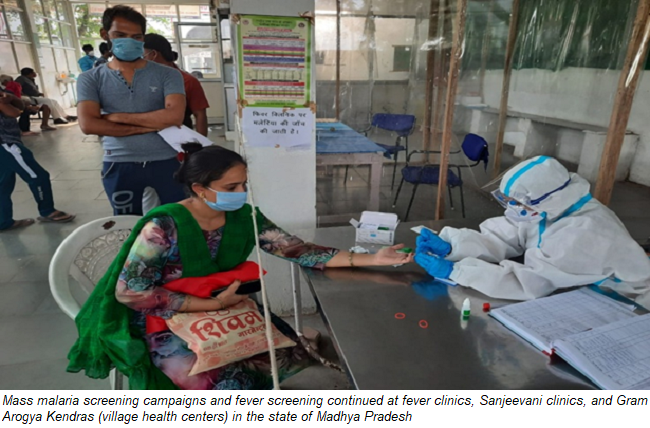The COVID-19 pandemic slowed but did not stop India’s efforts to reach vulnerable and unreached populations in rural, tribal, forested and underserved areas to meet the World Malaria Day 2021 goal of ‘Reaching the Zero Malaria Target’ by 2030.
Underpinning this success is strong political will and a resolve to leave no one behind. Efforts were renewed to strengthen primary health care to provide everyone access to essential health services, including the prevention, diagnosis and treatment of malaria during the pandemic despite challenges, such as the repurposing of health workers and community volunteers to support the country’s pandemic response.

“Health systems and health and frontline workers are stretched beyond capacity as they respond to this unprecedented crisis while providing services for the prevention, treatment, and control of other diseases such as malaria, HIV/AIDS and tuberculosis that continue to infect and affect millions. Amidst these challenges, we must not lose sight of our goal of reaching #ZeroMalaria through sustained prevention, detection and treatment to achieve zero indigenous transmission.” said Dr Roderico Orfin, WHO Representative to India.
WHO India has supported the adoption of the high burden to high impact (HBHI) approaches in the states of Chhattisgarh, Madhya Pradesh, West Bengal and Jharkhand. WHO also provided technical assistance to the National Vector Borne Disease Control Programme (NVBDCP) in undertaking situation analysis, capacity building of district malaria officers, finalising district operational plans for malaria reduction and elimination; and enhancing quality assurance of malaria microscopy.
Endemic states continued to offer services, such as the distribution of long-lasting insecticidal nets (LLINs), mass screenings, and treatment through 2020. During the pandemic, the North-Eastern states Mizoram and Tripura distributed 414 197 LLINs within five weeks and 819 509 LLINs within eight weeks to vulnerable populations. The state of Chhattisgarh launched the Malaria Mukt Bastar Abhiyaan in the Bastar division to provide screening and treatment services during the pandemic.
The WHO’s World Malaria Report 2020 highlighted India’s gains in the path to elimination. India recorded impressive 60% reduction in reported cases compared with 2017, and a 46% reduction in cases compared with 2018, which built momentum to reach the goal of zero indigenous malaria cases by 2027.
India’s National Strategic Plan for Malaria Elimination (2017-22) has led to the rapid scale up of quality diagnosis and treatment among vulnerable populations and in remote areas. Strengthening active surveillance, malaria microscopy, epidemic response, vector control, and personal protection measures, and community mobilisation while observing COVID-appropriate behaviours have enabled several states to register large reductions in their malaria burden.
The eastern state of Odisha, which carried more than 40% of the country’s malaria burden, reported a 90% decline in malaria cases and 89% decline in malaria deaths in 2020 as compared to 2015. The malaria-endemic North-Eastern region and the states of Jharkhand, Chhattisgarh, and Madhya Pradesh also registered similar reductions in cases and deaths.
“The surveillance system has been strengthened to detect, notify, investigate and respond to all cases to achieve universal coverage of case detection and treatment of all malaria cases. Community mobilization is integral to our elimination strategy to improve compliance to prevention and curative interventions,” said Dr Himanshu Jayswar, Deputy Director, Directorate of Health Services, Government of Madhya Pradesh.
